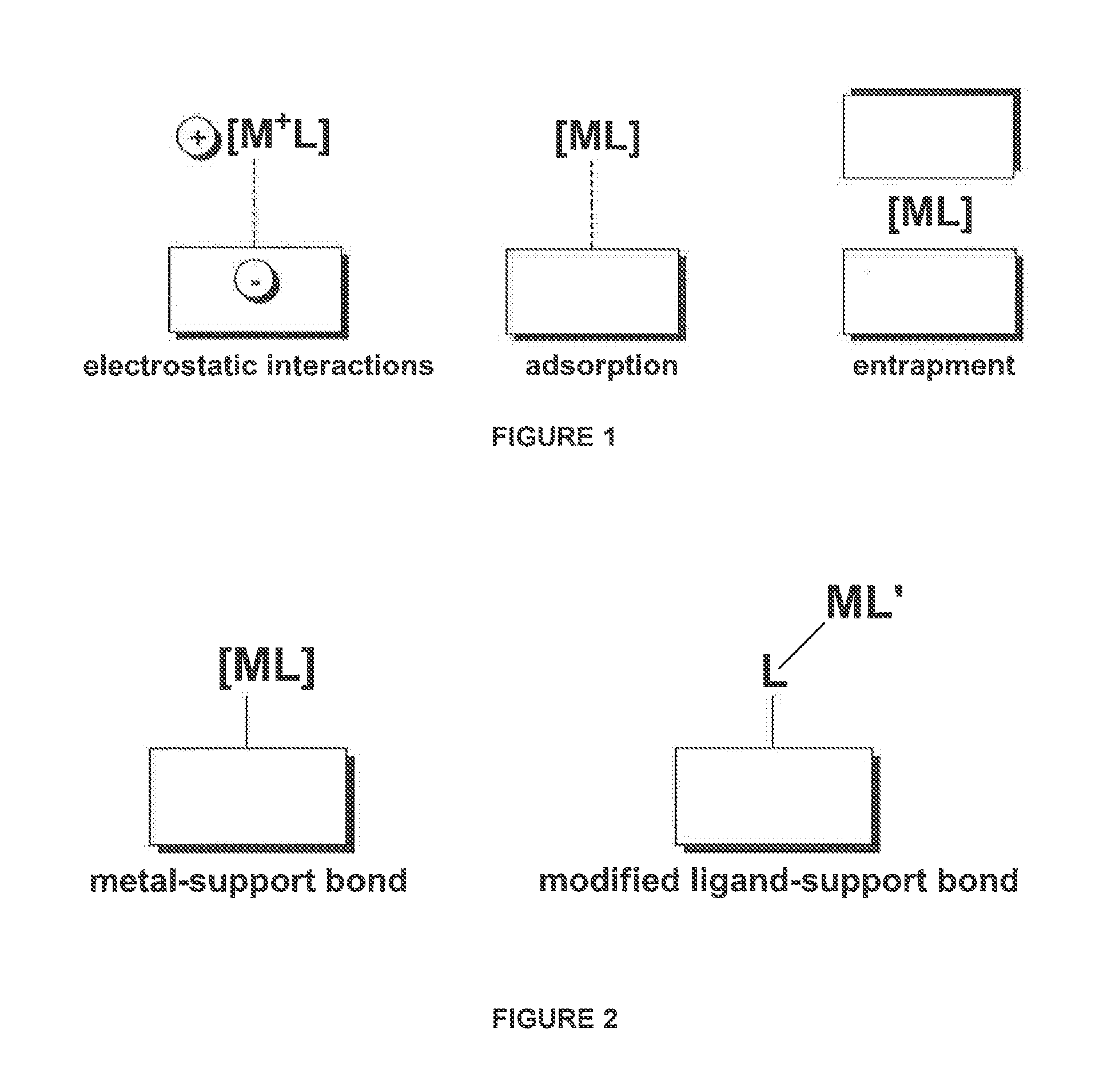Catalyst systems for use in continuous flow reactors and methods of manufacture and use thereof
a technology of catalyst system and continuous flow reactor, which is applied in the direction of physical/chemical process catalyst, organic compound/hydride/coordination complex catalyst, organic reduction, etc., can solve the problems of inability to meet the requirements of continuous flow reactor,
- Summary
- Abstract
- Description
- Claims
- Application Information
AI Technical Summary
Benefits of technology
Problems solved by technology
Method used
Image
Examples
example 1
Hydrogenation of 3-buten-2-ol over catalytic polymeric framework 42 (poly-[Rh(NBD)((R)-5,5′-dinorimido-BINAP)](SbF6) / BaSO4)
[0147]The catalytic polymeric framework (CPF) 42 was chosen for initial experiments in the H-Cube® continuous-flow hydrogenation reactor because this catalyst does not require a silver salt to generate an active catalyst. The NBD ligand is removed by hydrogenation during the catalytic hydrogenation reaction, generating the active catalytic species [Rh((R)-5,5′-dinorimido-BINAP)]+. CPF 42 was first evaluated using 3-buten-2-ol (71) because it was found that 71 was a highly active substrate for allylic alcohol isomerizations. 71 was also known to undergo olefin hydrogenation and isomerization (Equation I), which allowed activity of the CPF to be evaluated for both hydrogenation and isomerization. The catalyst activation experiments using COF 42 in the H-Cube® are summarized in Table 2. To achieve 100% conversion, concentration of the substrate solution was diluted...
example 2
Secondary Allylic Alcohol Size Effects
[0150]In a previous study on isomerization of a series of allylic alcohols catalyzed by the CPF 42 (+AgSbF6) (Corkum, E. G.; Kalapugama, S.; Hass, M. J.; Bergens, S. H. RSC Advances 2012, 2, 3473), it was shown that increasing chain length decreased rate of isomerization; secondary allylic alcohols containing alkyl chains with more than three carbons resulted in a decrease in catalytic activity. Activated CPF 42 was used for hydrogenation of a series of allylic alcohols to confirm / investigate the size effect. Substrates that were chosen for this study included 3-buten-2-ol (71), 1-penten-3-ol (73), 1-hexen-3-ol (74) and 1-hepten-3-ol (75), and the results are summarized in Table 3.
TABLE 3Continuous-flow hydrogenation / isomerization of allylic alcohol substratescatalyzed by rhodium catalyst-organic framework 42.aR = CH3 (71), C2H5 (73), C3H7 (74), C4H9 (75)TotalLoadingConversionbProduct Distributionb (%)Sub(Sub / Rh)(%)HydrogenatedIsomerized712000 / 1...
example 3
Hydrogenation of Dehydro Amino Acid Derivatives
[0152]In this example, rhodium catalytic polymeric framework 42 was used to catalyze continuous flow hydrogenation of α-acetamidocinnamic acid.
TABLE 4Continuous-flow hydrogenation of α-acetamidocinnamic acid 100 catalyzedby rhodium catalyst-organic framework 42.aH2 PressureEntryTemp (° C.)(bar)Yieidb (%)15030112505023aReactions were carried out with 0.028M solutions of α-acetamidocinnamic acid in THF under the following conditions: Sub / Rh = 200 / 1, 0.8 mL / min flow rate. The same poly-[Rh(NBD)((R)-5,5′-dinorimido-BINAP)](SbF6) / BaSO4 CatCart was used for both entries.bYield was determined by 1H-NMR.
[0153]Referring to Table 4, yield was 11% (TON=22) under standard conditions (entry 1) and increased to only 23% (TON=46) under 50 atm of H2 (entry 2). Without wishing to be bound by theory, it was postulated that the poor reactivity was due to a substrate size effect; specifically, the CPF 42-substrate size threshold was exceeded by the α-aceta...
PUM
| Property | Measurement | Unit |
|---|---|---|
| MAS frequencies | aaaaa | aaaaa |
| MAS frequencies | aaaaa | aaaaa |
| outer diameter | aaaaa | aaaaa |
Abstract
Description
Claims
Application Information
 Login to View More
Login to View More - R&D
- Intellectual Property
- Life Sciences
- Materials
- Tech Scout
- Unparalleled Data Quality
- Higher Quality Content
- 60% Fewer Hallucinations
Browse by: Latest US Patents, China's latest patents, Technical Efficacy Thesaurus, Application Domain, Technology Topic, Popular Technical Reports.
© 2025 PatSnap. All rights reserved.Legal|Privacy policy|Modern Slavery Act Transparency Statement|Sitemap|About US| Contact US: help@patsnap.com



